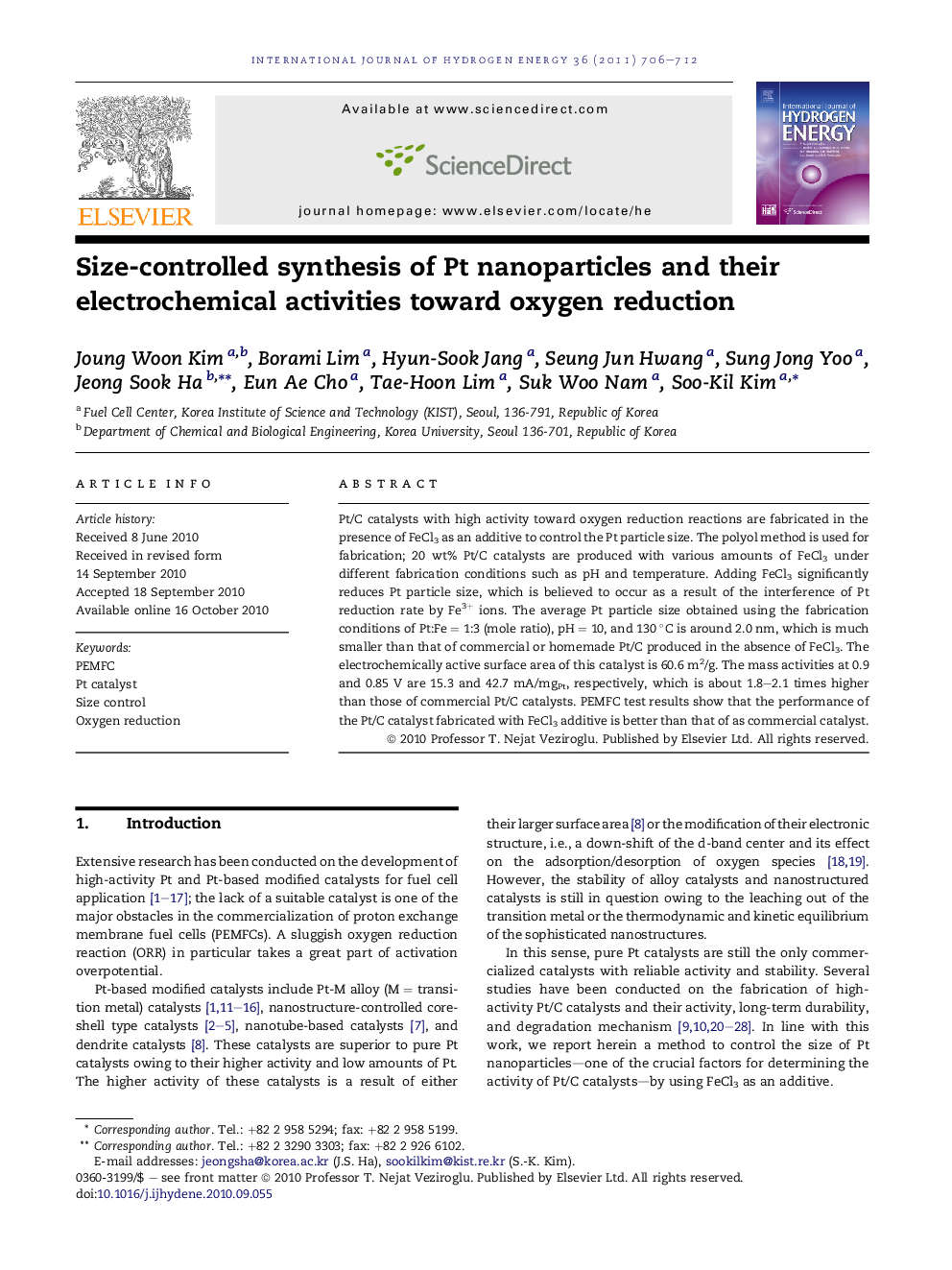| Article ID | Journal | Published Year | Pages | File Type |
|---|---|---|---|---|
| 1277824 | International Journal of Hydrogen Energy | 2011 | 7 Pages |
Pt/C catalysts with high activity toward oxygen reduction reactions are fabricated in the presence of FeCl3 as an additive to control the Pt particle size. The polyol method is used for fabrication; 20 wt% Pt/C catalysts are produced with various amounts of FeCl3 under different fabrication conditions such as pH and temperature. Adding FeCl3 significantly reduces Pt particle size, which is believed to occur as a result of the interference of Pt reduction rate by Fe3+ ions. The average Pt particle size obtained using the fabrication conditions of Pt:Fe = 1:3 (mole ratio), pH = 10, and 130 °C is around 2.0 nm, which is much smaller than that of commercial or homemade Pt/C produced in the absence of FeCl3. The electrochemically active surface area of this catalyst is 60.6 m2/g. The mass activities at 0.9 and 0.85 V are 15.3 and 42.7 mA/mgPt, respectively, which is about 1.8–2.1 times higher than those of commercial Pt/C catalysts. PEMFC test results show that the performance of the Pt/C catalyst fabricated with FeCl3 additive is better than that of as commercial catalyst.
